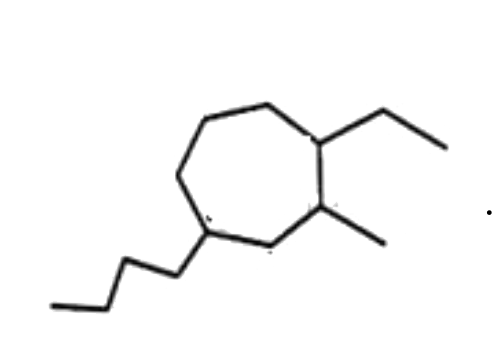A mutant micro-organism unable to synthesize a compound required for it growth but able to grow if the compound is provided, is known as
Auxotropy
Prototropy
Autotropy
None of these
The correct Answer is:A
To solve the question regarding the classification of a mutant microorganism that cannot synthesize a compound necessary for its growth but can grow if the compound is supplied, we can follow these steps:
1. Understanding the Terminology:
- The question describes a microorganism that is unable to synthesize a necessary compound for its growth. This indicates that it has a mutation affecting its metabolic capabilities.
2. Identifying Types of Microorganisms:
- In microbiology, organisms can be classified based on their ability to synthesize certain compounds.
- Prototrophs are organisms that can synthesize all the compounds they need for growth from minimal media.
- Auxotrophs, on the other hand, are mutants that cannot synthesize one or more compounds required for their growth and need these compounds to be supplied in their growth medium.
3. Relating to Beadle and Tatum's Work:
- The concept of prototrophs and auxotrophs was established through the work of scientists George Beadle and Edward Tatum. They conducted experiments with the fungus *Neurospora crassa*.
- They found that while the wild-type (normal) strain could grow on minimal media (prototroph), the mutant strains (auxotrophs) required additional nutrients.
4. Conclusion:
- Based on this understanding, the correct term for the mutant microorganism described in the question is auxotroph. An auxotroph is a mutant that cannot synthesize a specific compound and requires it to be provided externally for growth.
Final Answer:
The mutant microorganism unable to synthesize a compound required for its growth but able to grow if the compound is provided is known as an auxotroph.
---
- The question describes a microorganism that is unable to synthesize a necessary compound for its growth. This indicates that it has a mutation affecting its metabolic capabilities.
- In microbiology, organisms can be classified based on their ability to synthesize certain compounds.
- Prototrophs are organisms that can synthesize all the compounds they need for growth from minimal media.
- Auxotrophs, on the other hand, are mutants that cannot synthesize one or more compounds required for their growth and need these compounds to be supplied in their growth medium.
- The concept of prototrophs and auxotrophs was established through the work of scientists George Beadle and Edward Tatum. They conducted experiments with the fungus *Neurospora crassa*.
- They found that while the wild-type (normal) strain could grow on minimal media (prototroph), the mutant strains (auxotrophs) required additional nutrients.
- Based on this understanding, the correct term for the mutant microorganism described in the question is auxotroph. An auxotroph is a mutant that cannot synthesize a specific compound and requires it to be provided externally for growth.
The mutant microorganism unable to synthesize a compound required for its growth but able to grow if the compound is provided is known as an auxotroph.
Topper's Solved these Questions
- GENETICS & MOLECULAR BASIS OF INHERITANCE AND MUTATIONBOOK - ALLENCHAPTER - GENETICS & MOLECULAR BASIS OF INHERITANCE AND MUTATIONEXERCISE - EXERCISE-II (PREVIOUS YEAR QUESTIONS
104 Videos
- GENETICS & MOLECULAR BASIS OF INHERITANCE AND MUTATIONBOOK - ALLENCHAPTER - GENETICS & MOLECULAR BASIS OF INHERITANCE AND MUTATIONEXERCISE - EXERCISE-III (ANALYTICAL QUESTIONS
85 Videos
- GENETICS & MOLECULAR BASIS OF INHERITANCE AND MUTATIONBOOK - ALLENCHAPTER - GENETICS & MOLECULAR BASIS OF INHERITANCE AND MUTATIONEXERCISE - DEGINNERS BOX-8
5 Videos
- GENETICS BOOK - ALLENCHAPTER - GENETICS EXERCISE - Question
58 Videos
- GENETICS (PRINCIPLES OF INHERITANCE AND VARIATION) (MOLECULAR BASIS OF INHERITANCE)BOOK - ALLENCHAPTER - GENETICS (PRINCIPLES OF INHERITANCE AND VARIATION) (MOLECULAR BASIS OF INHERITANCE)EXERCISE - Question
53 Videos
Similar Questions
No chemical compound of helium is known.
View SolutionNo compounds of Kr and Xe are known.
View SolutionProvide structures for the compounds:

View SolutionProvide the systematic name of the compound shown

View SolutionWhat compounds are required for the laboratory preparation of nitric acid.
View SolutionThe structure of isobutyl group in an organic compound is :
View Solutionthe most aboundant organic compound in biophere is
View SolutionDuring the fusion of an organic compound with sodium metal, nitrogen of the organic compound is converted into
View SolutionThe purity of an organic compound is determined by
View SolutionThe structure of isobutyl group in an organic compound is
View Solution
